Tube disaster exercise: 'Tower collapses into station'Emergency crews are taking part in Europe's largest disaster training exercise to test their response to mass casualties.More than 1,000 volunteer "victims" covered with fake blood and injuries are part of the drill based around a tower block collapsing on to Waterloo tube station in London.
Four separate venues in London as well as a disused power station in Dartford, Kent, are being used for the exercise. It runs for four days.
Firefighters, police officers and ambulance staff are taking part in the exercise, which involves eight London Underground carriages were entombed with debris.
A total of 2,000 volunteers are involved over the course of the exercise.
At the scene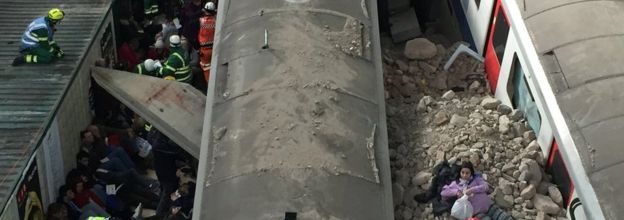 London Underground trains in the disaster training exercise
London Underground trains in the disaster training exerciseBy BBC correspondent Nick Higham
The noise was deafening: screaming, banging, shouting. Volunteers pretending to be passengers trapped in a smashed tube carriage deep below Waterloo Station were desperately trying to attract the attention of the first police and fire fighters on the scene.
It looked and sounded pretty convincing.
The London Fire Brigade has gone to considerable lengths to make its biggest-ever disaster exercise look and feel realistic.
Eight redundant tube carriages have been piled up in a disused power station at Dartford in Kent: two are buried out of sight.
It's a chance for the London Fire Brigade to practice their "urban search and rescue" skills.
It's also a chance to practice co-ordination with other agencies, including not just the police and ambulance but local authorities and even the specialists called in on these occasions to help identify dead bodies.
And as one of the organisers told me, it's also a chance for fire crews and paramedics to prepare themselves for some of the sights they might see on such occasions - which was why so many of the volunteers were sporting dramatic make-up simulating terrible injuries.
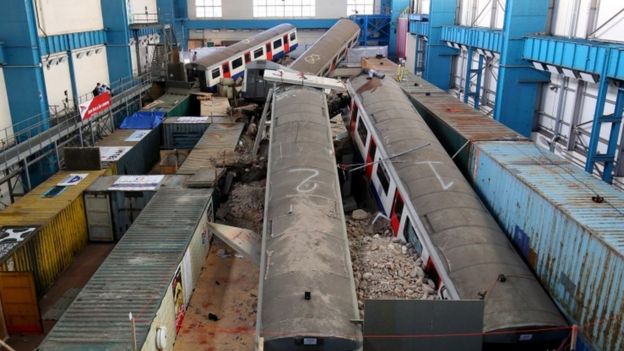 A disused power station in Kent is among the venues that will be used for the exercise
A disused power station in Kent is among the venues that will be used for the exercise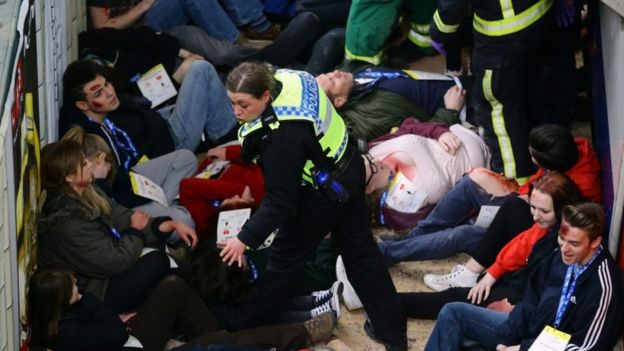 Hundreds of emergency services staff are involved
Hundreds of emergency services staff are involvedLondon Fire commissioner Ron Dobson said: "You can't get this sort of experience from a text book. We need to play it like it's real and ensure that should the worst happen, our response is effective and well-co-ordinated."
The teams' response would be "rigorously observed" by independent evaluators so lessons can be learned from the exercise, he said.
 Eight London Underground trains are being used in the drill
Eight London Underground trains are being used in the drillDisaster victim identification (DVI) teams from all
UK▸ police regions are working alongside other forensic specialists during the training exercise, referred to as Exercise Unified Response and co-ordinated by the London Fire Brigade.
In total, more than 250 personnel from these teams are working at the scene and in a specially constructed temporary mortuary during the four-day exercise.
More than 70 "partner agencies" including local councils, utility companies and specialist search and rescue teams are also taking part, as are disaster victim identification teams from Denmark, Germany, the Netherlands, Belgium, Luxembourg, France, Italy and Spain.
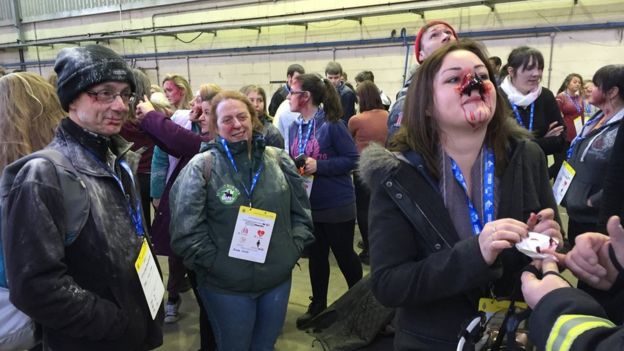 There are more than 1,000 volunteers taking part as casualties
There are more than 1,000 volunteers taking part as casualties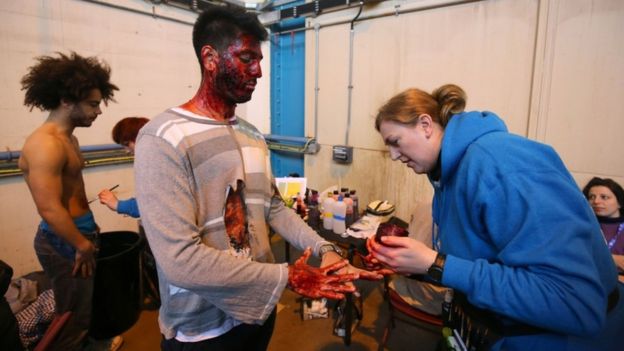 Exercise Unified Response has been co-ordinated by the London Fire Brigade
Exercise Unified Response has been co-ordinated by the London Fire Brigade London Underground trains are being used in the exercise
London Underground trains are being used in the exerciseChief Constable Debbie Simpson, National Police Chiefs' Council lead for Disaster Victim Identification, said: "When disaster strikes families need to be confident that the authorities are doing everything they can to identify their loved ones in a dignified and respectful way, whilst supporting any criminal investigation. It's not often we get to test working practices on such a scale and it's really positive to see so many of our European colleagues involved."
 An underground station entrance has been created at a disused power station
An underground station entrance has been created at a disused power station The emergency services evacuated the fake underground station
The emergency services evacuated the fake underground station 




